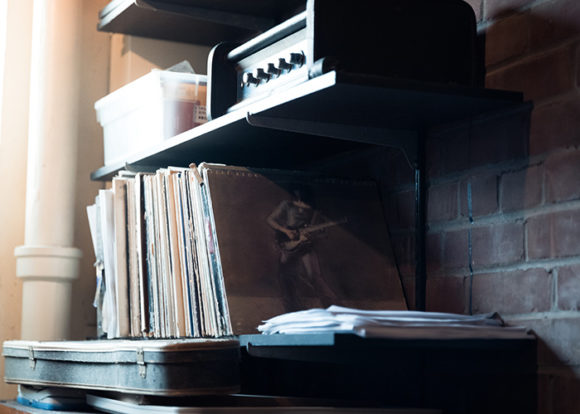
James Peck is a beat-maker, producer, live performer, audio engineer, and video artist based in Toronto. While being mostly known for his hip hop productions under the pseudonym memorecks, he also hosts finger drumming performances on his own YouTube channel, and builds various ensembles for the Reaktor User Library. One of which just so happened to be 2018’s most downloaded ensemble – the VHS Audio Degradation Suite.
Having recently returned from a teaching trip to the Arctic, where he co-held production workshops with seventh and eighth graders, Peck found time to sit down with Native Instruments to talk about the idea and inspiration behind his User Library ensembles.
Being involved in music production since the tender age of 13, Peck states that he didn’t study music as a child, but was more fascinated with the technical side of things. “I was really into computers,” he states. “A friend’s dad gave me a burned CD with a whole bunch of programs on it and Fruity Loops 3 was one of them, [which] I started using for the first while”. After moving on to chopping samples and using his first pad controller, Peck went on to study audio engineering and recording, which also included music business, theory, and songwriting. “I wasn’t one of those kids with piano lessons early-on or anything like that”, says Peck, who always kept a DIY approach to things. Eventually however, he did move on to teaching himself the piano.
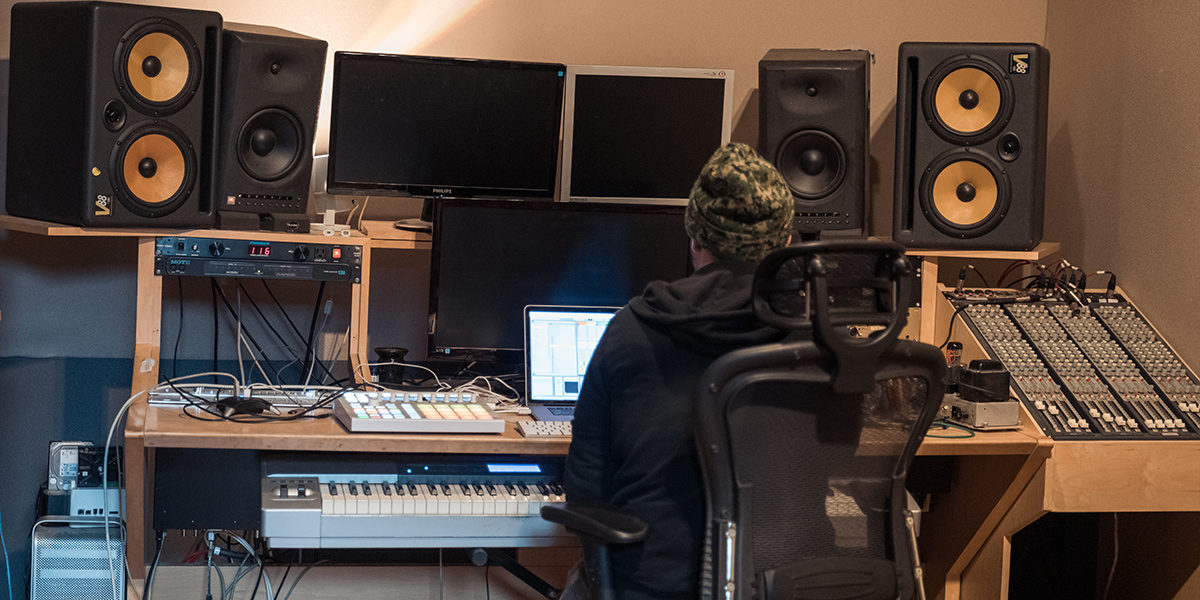
More than a lo-fi effect
“That was a little unexpected for me,” states Peck. “It’s funny, you’re an artist and musician, and you put out music and then this side-project gets more attention than some of your music does”. Having been a MASCHINE product specialist for several years, Peck was looking for an effect that was more than just another tape-wow or flutter effect. With literally hundreds of lo-fi and tape simulation effects already on the market, the Canadian producer started to experiment by mixing up existing ensembles like the Tape Mate and Crackle and Dust Blocks, taking these as a starting point to develop his own idea of an effect plugin.
“At that point, I decided it was going to be a VHS tape plug-in. There has been vinyl distortion and vinyl emulation plug-ins, there has been two-inch tape or reel-to-reel tape cassette emulations, but there hasn’t been anything specific emulating VHS. There is a lot more going on with the audio track on a VHS tape.”
Now the most downloaded Reaktor User Library effect ensemble, the VHS Audio Degradation Suite has been used by a broad selection of artists and productions across the globe. Read on to find out how Peck went about building the ensemble.
How the vhs audio degradation suite was made
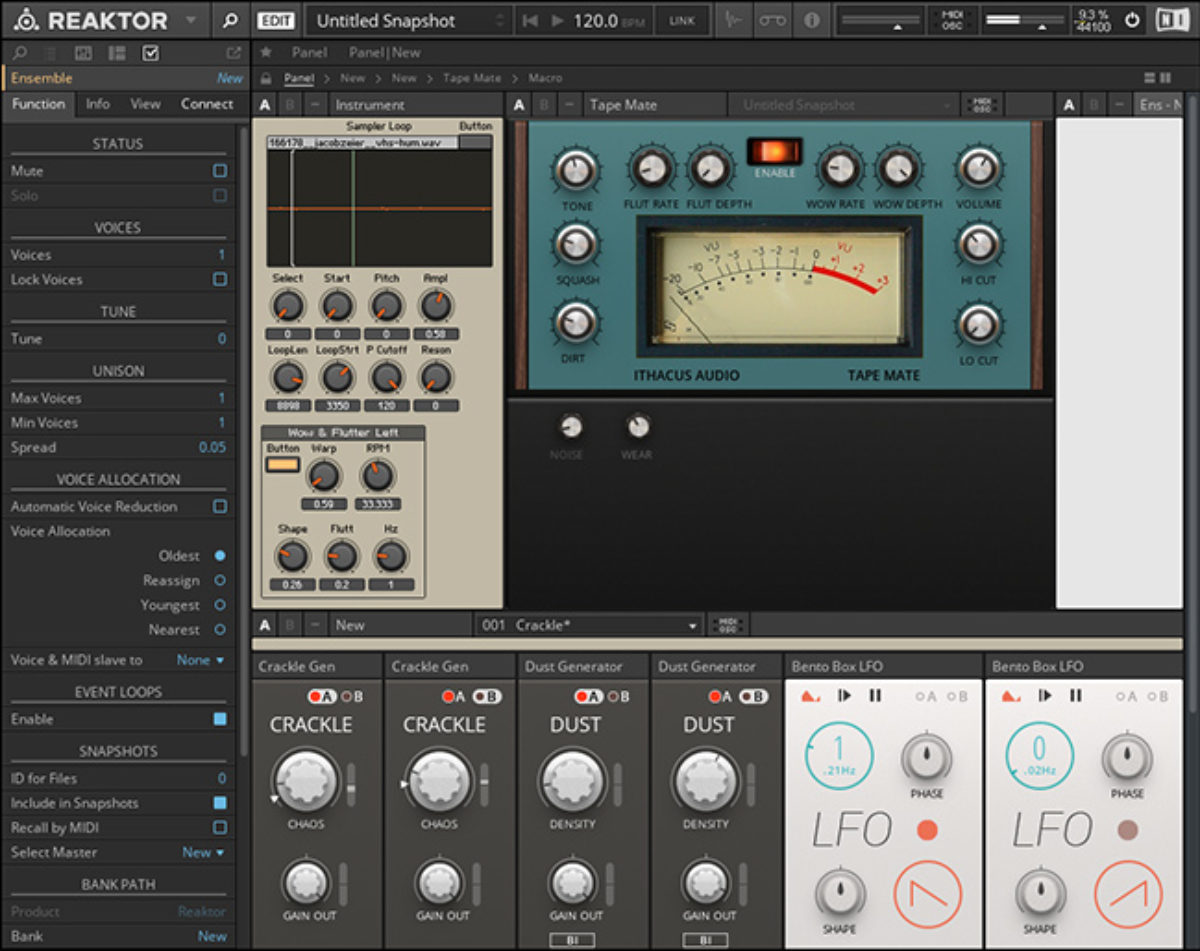
This is the first version of the ensemble. It was originally a combination of some Crackle and Dust blocks, Tape Mate, a sampler with VHS noise, and a wow/flutter section from a tape delay macro. It sounded good at this point, but I knew I could expand on some features and condense others. I also wanted everything to be in one unified interface.
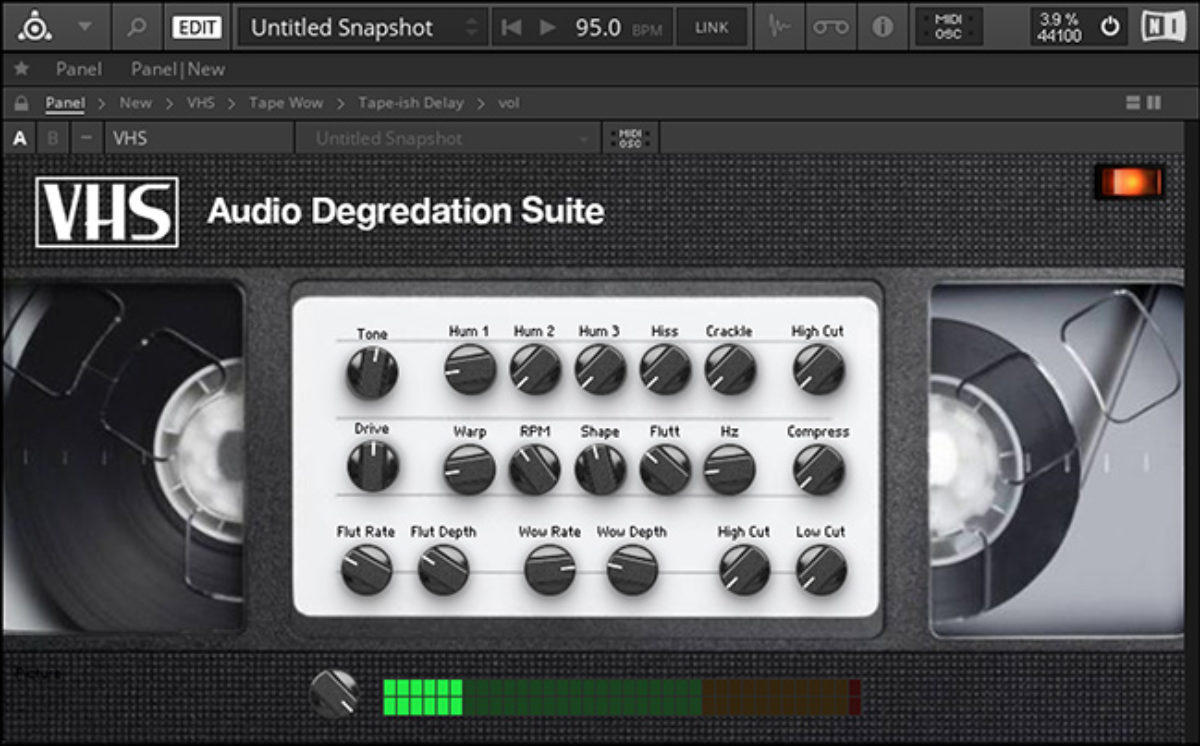
This is an earlier version of VHS. I was beginning to get every control on the same panel and had the initial concept for the graphics.

This is an overview of the signal path for VHS.
Chorus > Mic emulation > Preamp > Slew Limiter/Wear > Comp > 2-band saturator > LPF > Wow & Flutter A, Wow & Flutter B
The chorus was from the built-in effects available in Reaktor, a classic sound. The microphone emulation was from a block called “The Mic” by Jonathan Tremblay. Preamp, Wear, and Comp are elements of Tape Mate that were taken apart and integrated. The 2-band saturator I put together myself, after noticing the change in frequency response in VHS audio that had been “re-recorded”.
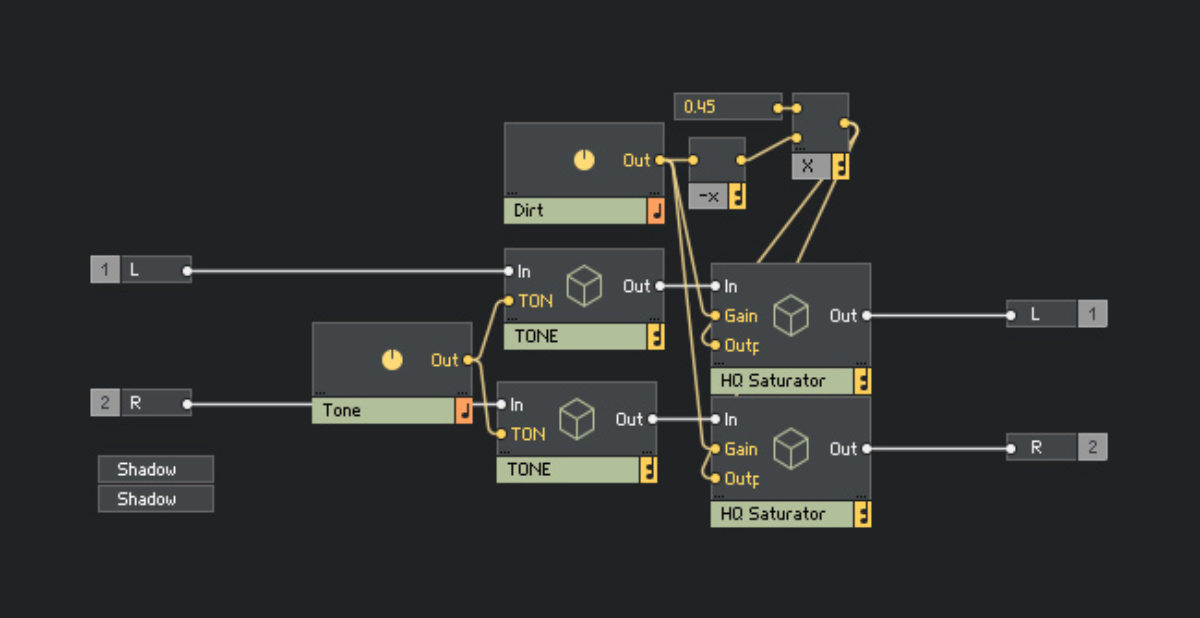
This section is meant to recreate the input gain stage of a recording device. It is a piece from Tape Mate that made it to the final stage. It uses an oversampled saturation algorithm to add non-linearity into the signal path.

This is another concept from Tape Mate. Slew limiters can control the rate of change an for an incoming signal, often used as “smoothers” for controls. When used on an audio signal it greatly reduces the dynamic range and frequency range. This would be similar to a “flux” control on a tape emulation VST. I believe it is meant to represent the charge in the tape, leftover from a previous magnetization.

The 2-band saturator was purpose-built to recreate the effect of “generations” on VHS tape. I was referencing a YouTube video where someone was recording a music video over and over again to the same tape, degrading every time. I looked at the audio in a spectrum analyzer and noticed that it was not only limited in frequency, but the high end was being saturated. By default, the crossover is around 2/3kHz but can be changed to emphasize the effect. I used oversampled saturators for increased quality.

The pitch modulation effect on VHS is achieved using a Single Delay circuit. By altering the delay time in very small amounts, the pitch of the audio coming out of the delay is modulated. Sine waves are typically used for warp or wow effects, and pulse waves can be used for flutter.
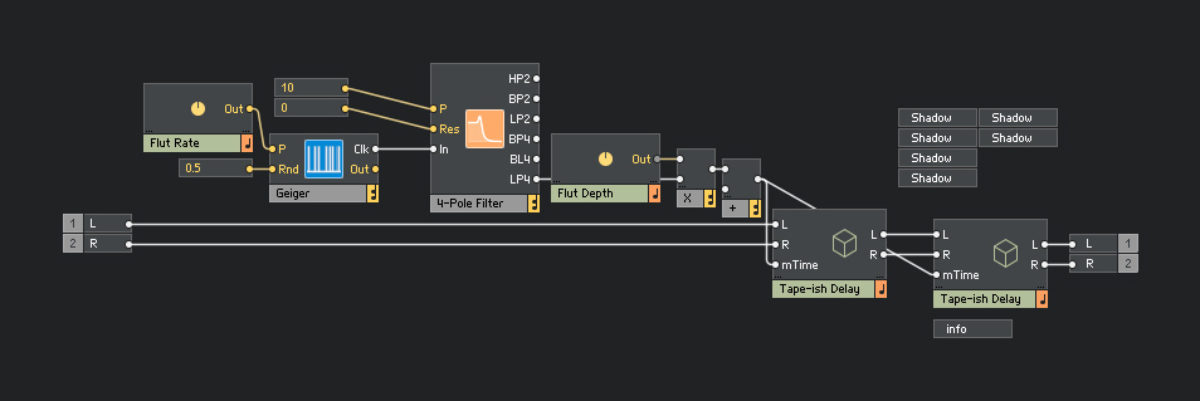
Two wow and flutter effects are used to recreate the effects of re-recording a tape. In this version, the flutter is achieved using a geiger pulse, as opposed to a pulse wave, creating a more random sounding effect.
Make sure to check out James Peck’s other REAKTOR ensembles here.
Stay updated with memorecks on SoundCloud | Twitter | Bandcamp | Facebook | Instagram
Photos by: Michael Libis








